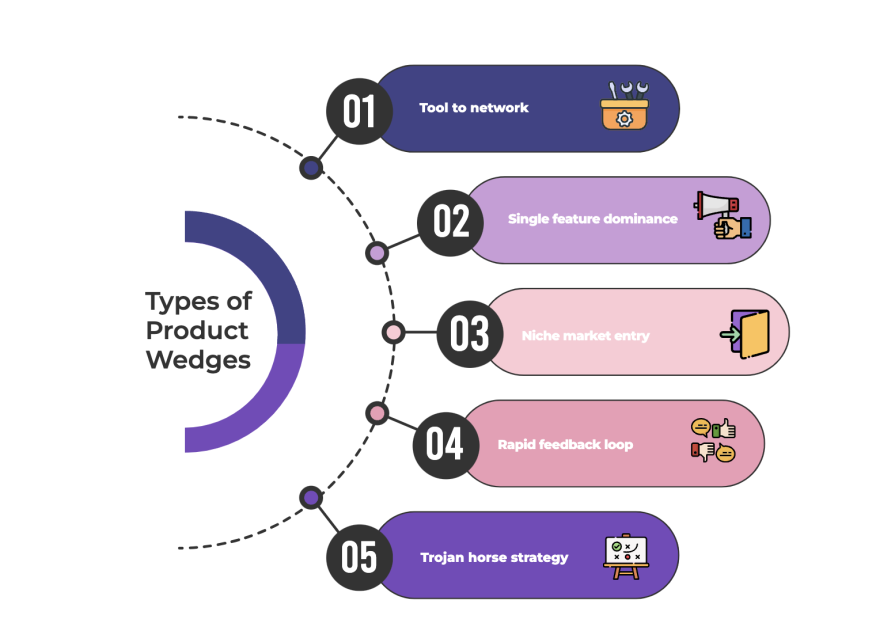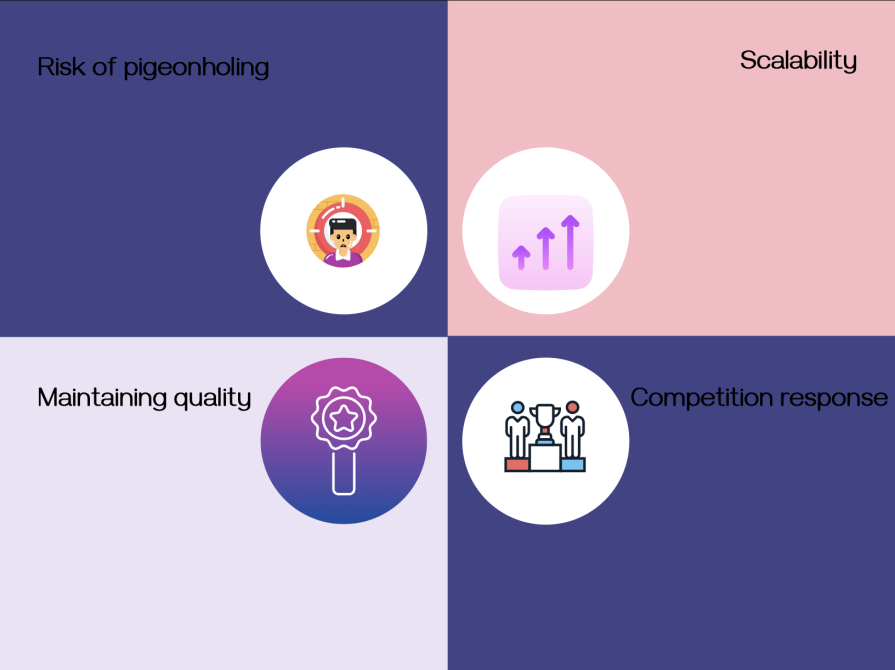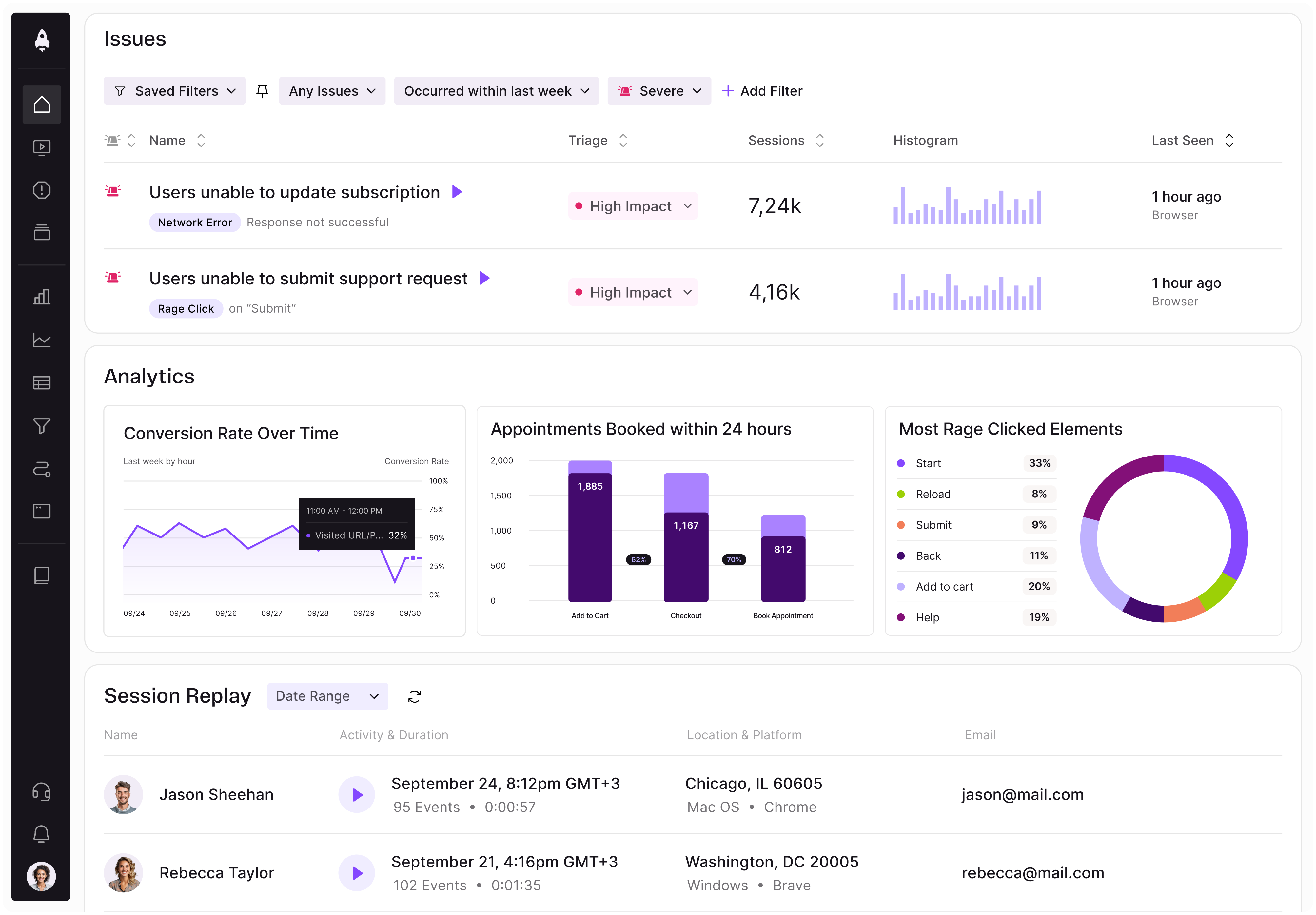Finding your way into a crowded market can feel like trying to unlock a tricky combination lock: one wrong turn, and you’re back to square one. It’s not just about having a good product; it’s about standing out in a way that people can’t ignore.

At its core, a product wedge is like making the perfect first impression. You want to introduce a product with one standout feature that immediately solves a pressing problem for your target audience.
This strategy not only draws attention but also sets the stage for broader opportunities. So, how does this work, and what makes it such an effective tool for you as a product manager? Keep reading to learn more.
A product wedge is a strategic method to enter a market by offering a focused, standout feature that addresses a specific customer need or pain point. It’s not about overwhelming users with a myriad of features; it’s about being laser-focused on solving a clear, pressing problem.
By delivering a solution that resonates deeply with a target audience, a product wedge establishes trust, builds credibility, and creates a pathway for long-term growth. This approach allows you to start small, make an immediate impact, and then expand your offering as you gain traction.
Unlike broad product launches that attempt to please everyone, a product wedge focuses on a narrow, impactful solution. By excelling in one area, you can gain traction, establish credibility, and build trust with your initial audience. Once you secure that, you can expand into new features, markets, or user segments, scaling up from that first success.
There are different types of product wedges that you can use depending on your specific use case. The most common include the following:

By implementing a product wedge strategy, you can take advantage of:
To help you get started implementing a product wedge strategy, implement these steps within your product team:
To give you a better idea of how to use a product wedge, this section outlines how major companies have used the technique to build scalable organizations.
When Instagram launched in 2010, it wasn’t trying to be a comprehensive social media platform. Instead, it focused on one simple yet powerful feature: making photos look beautiful through filters. This product wedge resonated deeply with users who wanted to elevate their photography without technical expertise.
By solving this specific problem, Instagram quickly gained a loyal following. Over time, the company expanded its offerings, adding video sharing, Stories, and shopping features, transforming it into one of the largest social platforms in the world. Starting with a single, impactful feature allowed Instagram to build trust and scale effectively.
Shopify’s journey began with a clear mission: to make it easy for small businesses to set up online stores. Its product wedge was simplicity and usability. At a time when creating an ecommerce website was cumbersome and expensive, Shopify’s platform provided an accessible solution.
Entrepreneurs flocked to the service, drawn by its ease of use and affordability. As its customer base grew, Shopify strategically introduced advanced tools like payment processing, inventory management, and third-party integrations, evolving into a comprehensive ecommerce ecosystem. Shopify’s success underscores how starting with a focused solution can pave the way for long-term growth.
Slack’s rise to prominence began with its focus on one core issue: team communication. In its early stages, Slack targeted small teams within organizations, offering a seamless, real-time messaging platform that replaced clunky email chains. By excelling at this specific need, Slack quickly gained traction among startups and tech companies. The platform’s simplicity, combined with its intuitive design, made it indispensable.
From this strong foundation, Slack expanded its feature set to include file sharing, integrations with other tools, and enterprise-grade solutions, becoming a leader in workplace communication. The lesson here is clear: a strong wedge can serve as the perfect starting point for dominating an entire category.
Before the pandemic, Zoom was already carving out its niche in the video conferencing market with a product wedge centered on reliability and ease of use. At a time when competitors often delivered glitchy experiences, Zoom focused on providing smooth, high-quality video calls. This unwavering commitment to a specific pain point earned it a loyal user base.
When remote work surged in 2020, Zoom was perfectly positioned to scale rapidly, adding features like virtual backgrounds, breakout rooms, and enhanced security. Its success highlights the power of addressing a critical problem and building upon that initial trust to grow.
Although product wedges provide benefits, like anything else, they also come with their share of challenges:

A product wedge strategy is a smart way to enter a competitive market, focusing on solving one specific problem exceptionally well. By starting small, gaining traction, and expanding thoughtfully, you can build a strong foundation for long-term success.
It’s not just about breaking into a market, it’s about setting the stage for sustainable growth. The product wedge is more than just a tactic; it’s a mindset that prioritizes precision, impact, and scalability. Ready to wedge your way into success?
Featured image source: IconScout

LogRocket identifies friction points in the user experience so you can make informed decisions about product and design changes that must happen to hit your goals.
With LogRocket, you can understand the scope of the issues affecting your product and prioritize the changes that need to be made. LogRocket simplifies workflows by allowing Engineering, Product, UX, and Design teams to work from the same data as you, eliminating any confusion about what needs to be done.
Get your teams on the same page — try LogRocket today.

A practical five minute revenue estimation method to help product managers compare ideas, drop low impact features, and prioritize smarter.

A practical guide for PMs who want to stop being bottlenecks, delegate smarter, and lead teams effectively with a clear ownership framework.

Stop letting unreliable data block features. Treat data as inventory to track quality, ownership, and ship with confidence.

Learn why slide decks slow teams down and explore better tools like whiteboards, PRDs, and prototypes to improve collaboration and alignment.